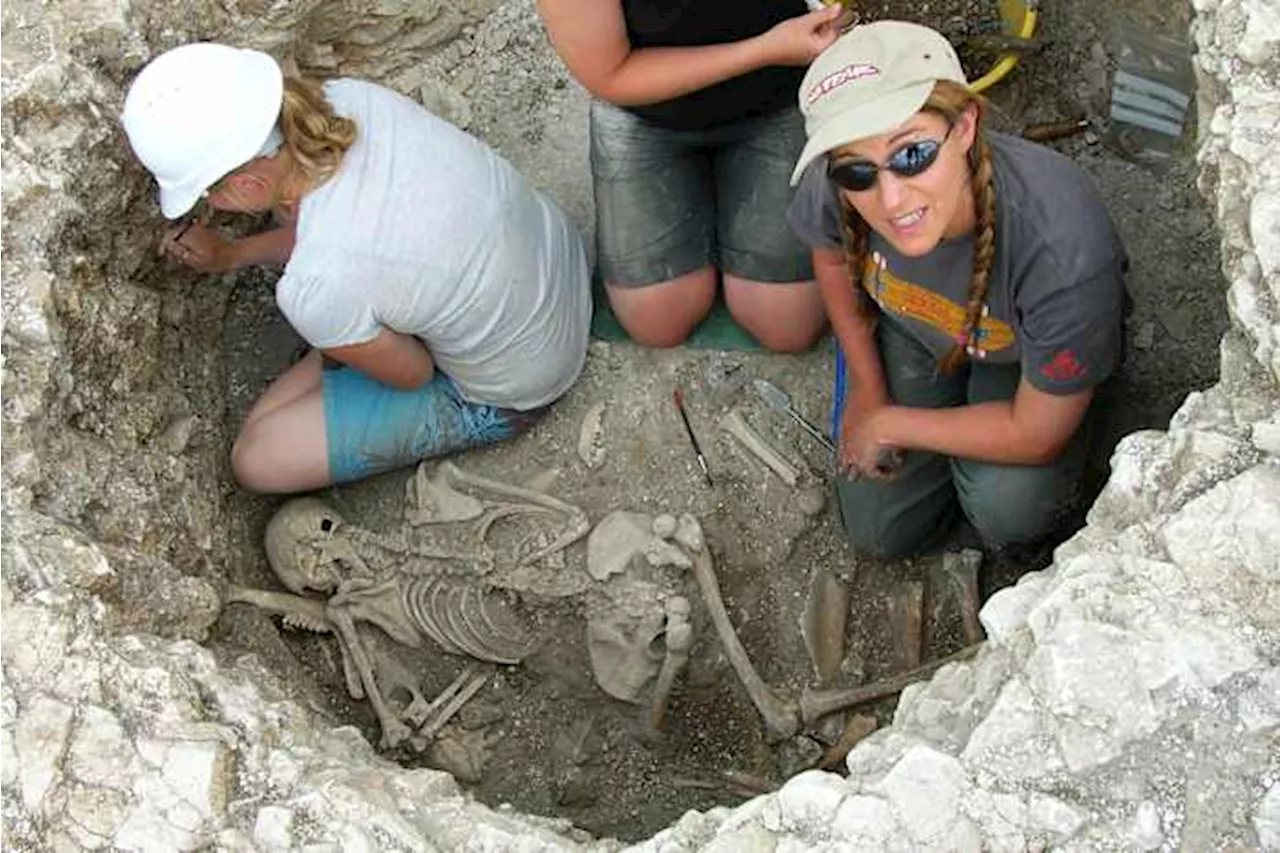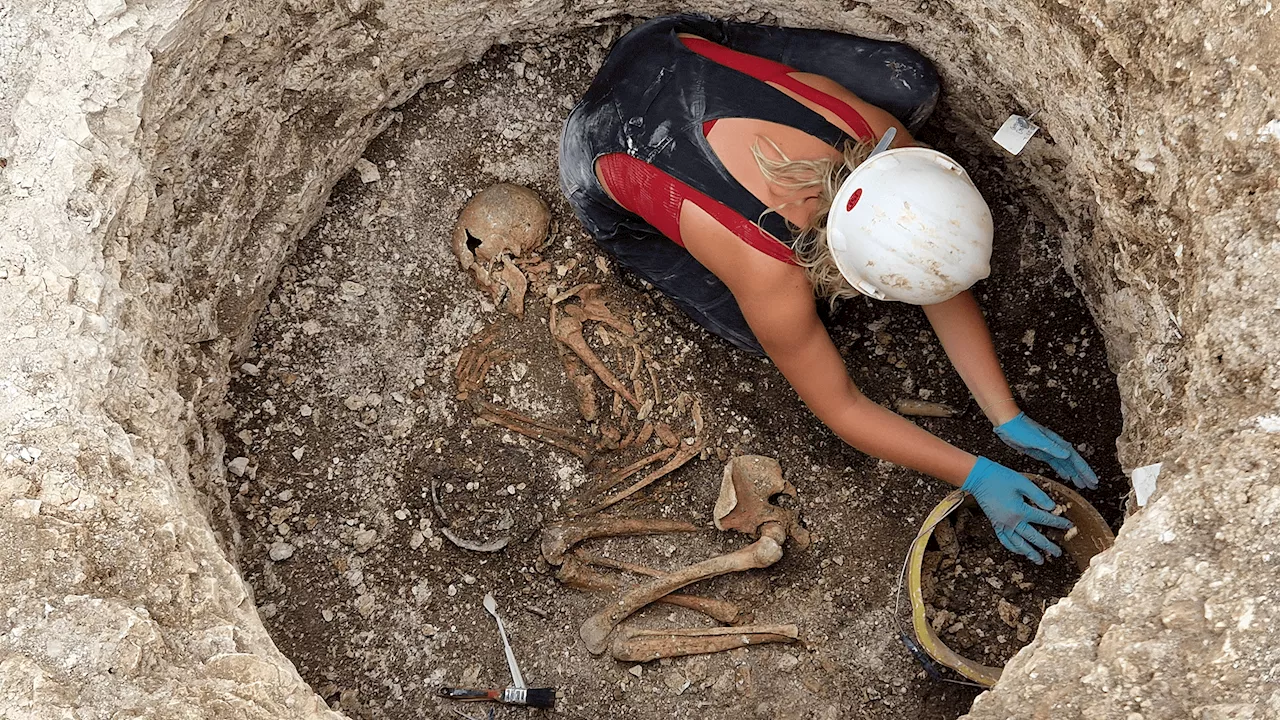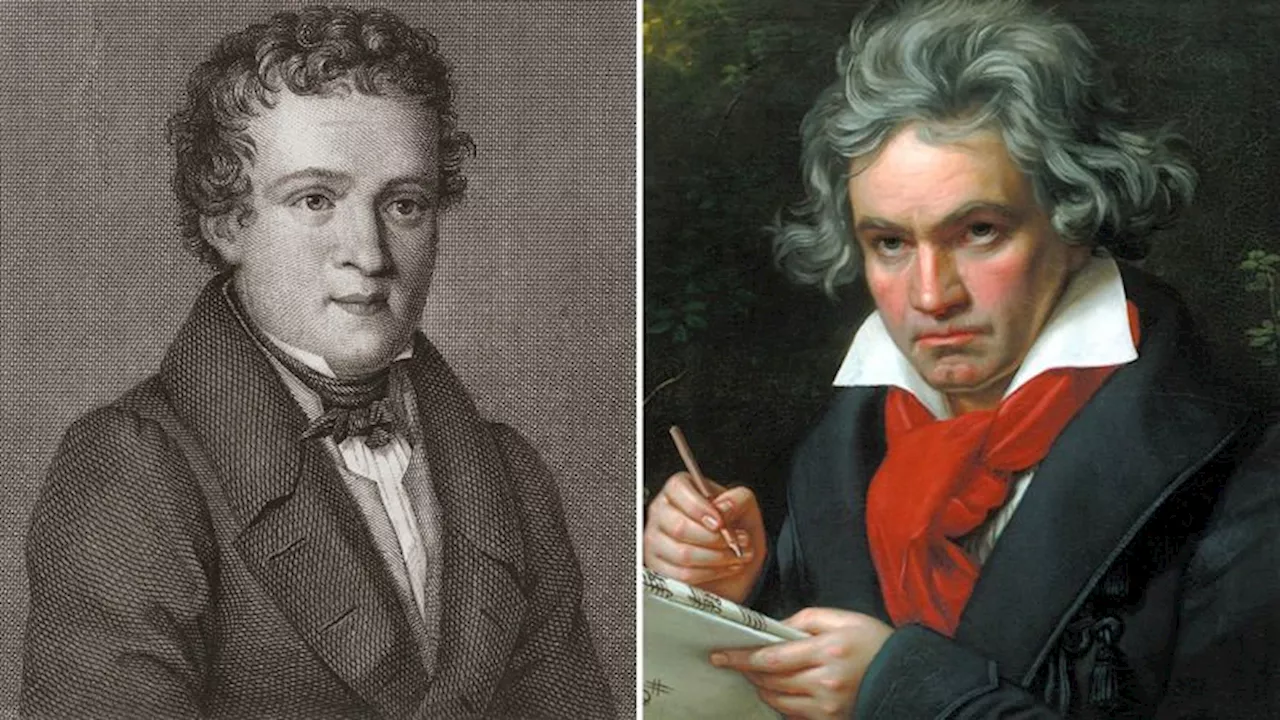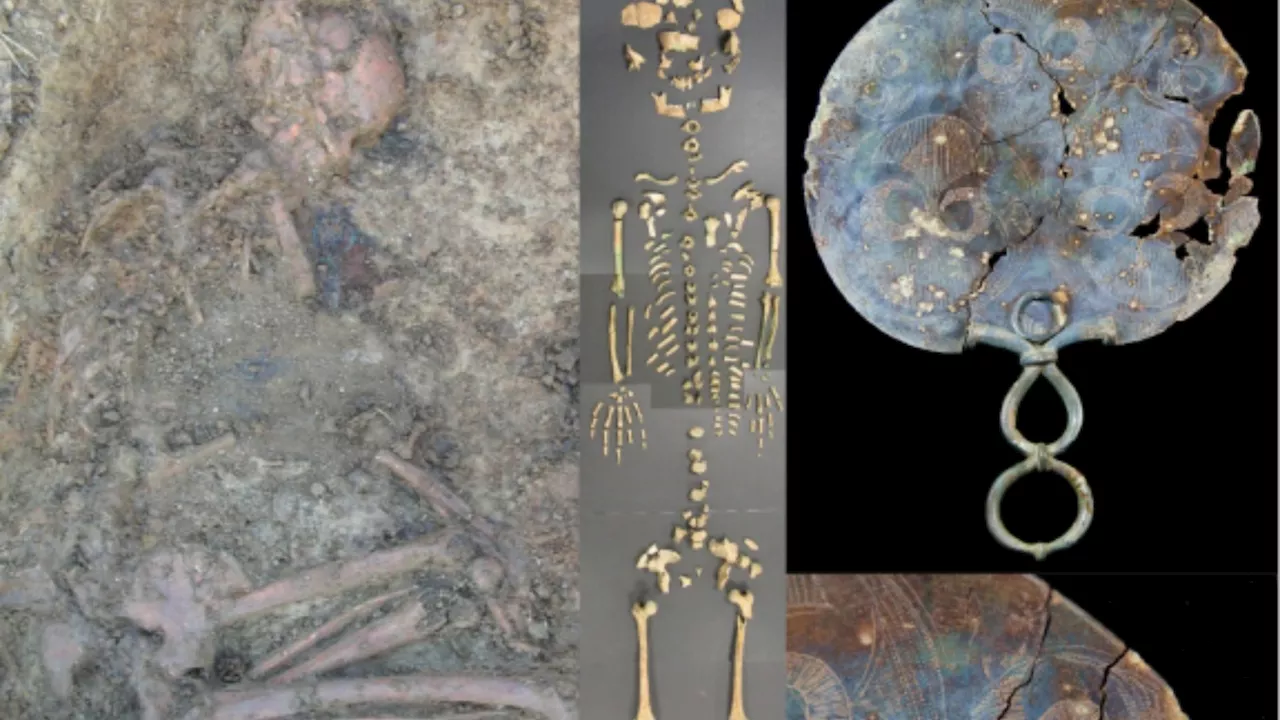A new study challenges the traditional view of Iron Age Britain as a male-dominated society, revealing evidence of a matrilineal system where descent and inheritance were traced through the mother's line. This discovery, based on the analysis of ancient DNA from over 50 individuals, suggests significant female social and political empowerment during this period.
A groundbreaking DNA study conducted by an international team of geneticists and archaeologists, spearheaded by Trinity College Dublin, has overturned the traditional view of Iron Age Britain as a male-dominated society. The research, based on the analysis of ancient DNA from over 50 individuals excavated from a Late Iron Age site near Winterborne Kingston in England, suggests the prevalence of a matrilineal system during this period.
This matrilineal structure, where descent and inheritance were traced through the mother's line, is the first documented instance in European prehistory. The findings point towards significant female social and political empowerment during the Iron Age. The researchers discovered that most members of this community traced their maternal lineage back to a single woman who lived centuries before. In contrast, relationships through the father's line were virtually nonexistent. This points towards a social system known as “matrilocality,” where the husband moves into his wife’s family community after marriage, rather than vice versa. This suggests that land and inheritance were likely passed down through the female line. The team further analyzed existing genetic data from other Iron Age sites across Britain and found evidence of widespread matrilocality during this period, challenging conventional notions of social structure. Prior to this genetic study, archaeologists had already observed that women's burials at the Winterborne Kingston site were often more elaborately furnished than those of men. Roman accounts of Iron Age Britain, although not always considered entirely reliable, also recorded women occupying positions of power. Two of the earliest recorded rulers were queens – Boudica and Cartimandua – who commanded armies. While some have suggested that the Romans exaggerated the liberties of British women to portray an untamed society, this genetic evidence, coupled with archaeological findings, strongly suggests that women held influence in various aspects of Iron Age life. The study also sheds light on migration patterns in Iron Age Britain, revealing significant cross-channel mobility that could have contributed to the arrival of Celtic languages. The findings were published in the journal Nature
History MATRILINEAL SOCIETY IRON AGE BRITAIN ANCIENT DNA FEMALE EMPOWERMENT MIGRATION PATTERNS
United States Latest News, United States Headlines
Similar News:You can also read news stories similar to this one that we have collected from other news sources.
 Female Family Ties Defined Social Networks in Iron Age BritainA recent genetic analysis of a late Iron Age cemetery in Dorset reveals that women were closely related, while unrelated men likely immigrated to the community after marriage.
Female Family Ties Defined Social Networks in Iron Age BritainA recent genetic analysis of a late Iron Age cemetery in Dorset reveals that women were closely related, while unrelated men likely immigrated to the community after marriage.
Read more »
 All 5 Shane Black Christmas Movies, RankedRobert Downey Jr. as Tony Stark sitting with an Iron Man suit in Iron Man 3
All 5 Shane Black Christmas Movies, RankedRobert Downey Jr. as Tony Stark sitting with an Iron Man suit in Iron Man 3
Read more »
 This 4-Minute MCU Scene Is The Best Of Robert Downey Jr's Entire Iron Man CareerTony Stark revealing he is Iron Man in Iron Man
This 4-Minute MCU Scene Is The Best Of Robert Downey Jr's Entire Iron Man CareerTony Stark revealing he is Iron Man in Iron Man
Read more »
 Exclusive Rocky’s Trailer: The Iron Claw’s Stanley Simons Star in Coming-of-Age MovieThe exclusive Rocky's trailer has dropped for the coming-of-age drama movie, which hails from Gravitas Ventures.
Exclusive Rocky’s Trailer: The Iron Claw’s Stanley Simons Star in Coming-of-Age MovieThe exclusive Rocky's trailer has dropped for the coming-of-age drama movie, which hails from Gravitas Ventures.
Read more »
 British Iron Age burial grounds reveal women had powerLaura is a science news writer, covering a wide variety of subjects, but she is particularly fascinated by all things aquatic, paleontology, nanotechnology, and exploring how science influences daily life. Laura is a proud former resident of the New Jersey shore, a competitive swimmer, and a fierce defender of the Oxford comma.
British Iron Age burial grounds reveal women had powerLaura is a science news writer, covering a wide variety of subjects, but she is particularly fascinated by all things aquatic, paleontology, nanotechnology, and exploring how science influences daily life. Laura is a proud former resident of the New Jersey shore, a competitive swimmer, and a fierce defender of the Oxford comma.
Read more »
 Ancient DNA Reveals Secrets of Vittrup Man, a Stone Age MigrantScientists analyzed the remains of Vittrup Man, a Stone Age migrant who died violently in Denmark around 5,200 years ago, using ancient DNA and other analytical techniques. The analysis revealed details about his diet, origins, and the circumstances surrounding his death.
Ancient DNA Reveals Secrets of Vittrup Man, a Stone Age MigrantScientists analyzed the remains of Vittrup Man, a Stone Age migrant who died violently in Denmark around 5,200 years ago, using ancient DNA and other analytical techniques. The analysis revealed details about his diet, origins, and the circumstances surrounding his death.
Read more »
